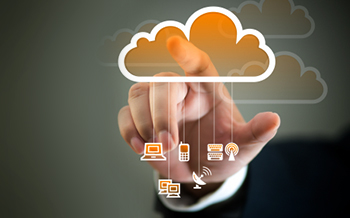
8 Cold Hard Truths for SMBs Not Worried About Disaster Recovery and Business Continuity
The foundation of any successful business continuity solution is the ability to retrieve data from any point in time from anywhere. When the topic of data recovery and business continuity comes up, you get the feeling that many decision makers at smaller businesses and organizations wish they could channel their inner six year old, simply cover their ears, and sing "La, la, la. I Can't Hear You. I'm Not Listening."Everybody thinks bad things only happen to other people. Just because we hear about a fatal car accident on the morning news, doesn't mean we fixate on that news when we ourselves get into a car and drive to work.
So no matter how many times the owner or executive of a small to midsize business (SMB) hears of other small businesses being crippled by hurricanes, tornados, fires, or flooding, they aren't necessarily overcome with fear to the point that they feel an urgency to take action.
Sure, they may think about backup and data recovery solutions a little more that day, but not enough to initiate immediate change or reverse a lenient approach to their processes.
If you fall into this category, here are eight cold hard truths to consider
- It isn't natural disasters or catastrophic losses like fires that take down small businesses but something far more sinister – malware. Cyber attacks through malware have grown exponentially in the past four years. Malware is hitting everything from PCs to Macs to mobile devices and it's inflicting damage.
- Over half of the small businesses in the U.S. have experienced disruptions in day-to-day business operations. 81% of these incidents have led to downtime that has lasted anywhere from one to three days.
- According to data compiled by the Hughes Marketing Group, 90% of companies employing less than 100 people spend fewer than eight hours a month on their business continuity plan.
- 80% of businesses that have experienced a major disaster are out of business within three years. Meanwhile, 40% of businesses impacted by critical IT failure cease operations within one year. 44% of businesses ravaged by a fire fail to ever reopen, and only 33% of those that do reopen survive any longer than three years.
- Disaster recovery solution providers estimate that 60% to 70% of all business disruptions originate internally – most likely due to hardware or software failure or human error.
- 93% of businesses unable to access their data center for ten or more days filed for bankruptcy within twelve months of the incident.
- In the United States alone, there are over 140,000 hard drive crashes each week.
- 34% of SMBs never test their backup and recovery solutions – of those who do, over 75% found holes and failures in their strategies.

Comments
Post a Comment